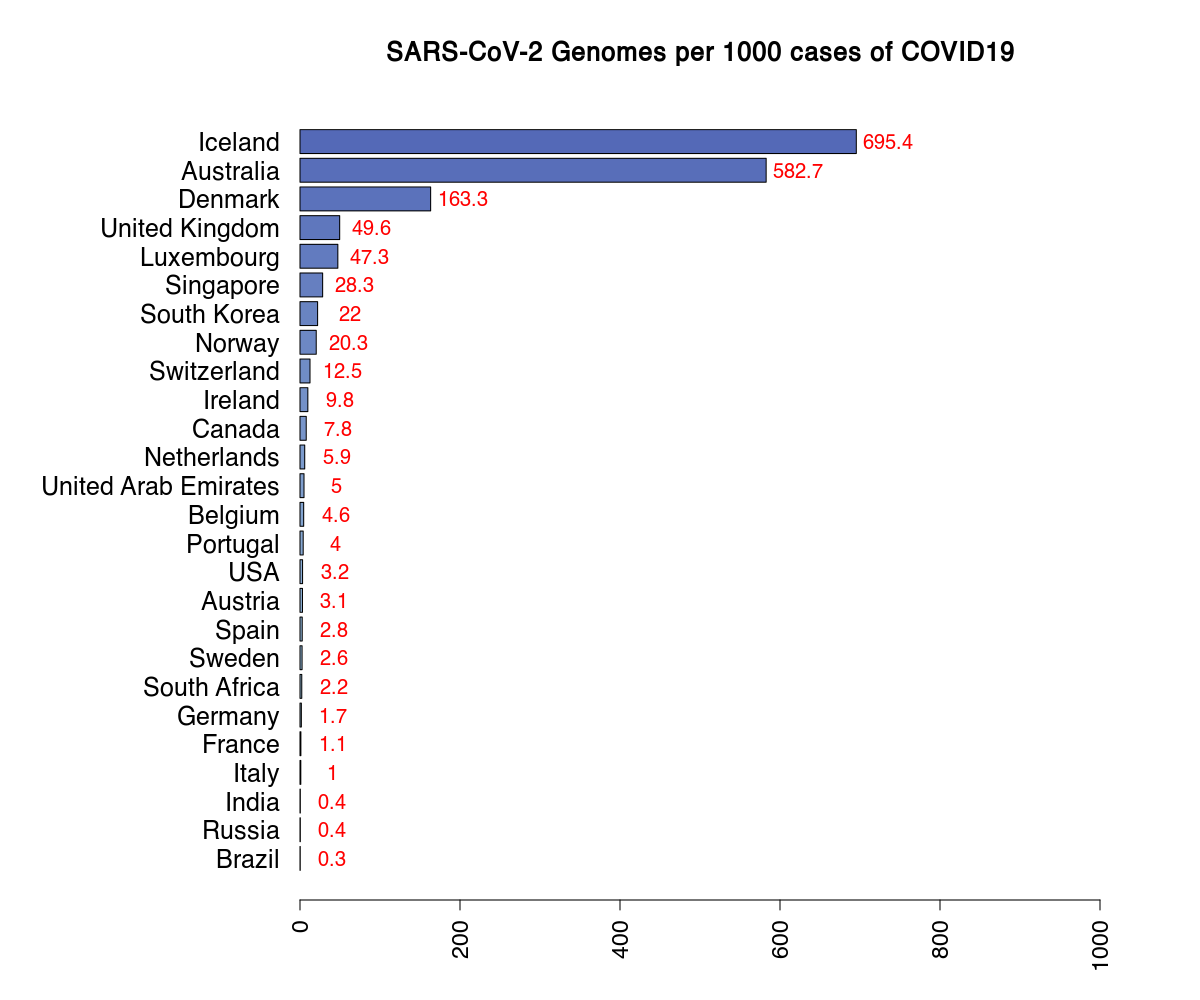SARS-CoV-2 genomes per 1000 cases of COVID-19
Published: 22 January 2021

SARS-CoV-2 is the etiological agent (the pathogen that causes the disease) of COVID-19. Sequencing the genome of the pathogen allows the monitoring of its evolution and the identification of novel strains or new variants. This approach is known as “genomic surveillance”, and represents the first line of defense against the spread of more dangerous variants of the virus, and at the same time can provide useful indications for the development of novel vaccines or drugs. To be effective, a genomic surveillance system requires that a significant proportion of the genomes of the pathogens circulating in a specific country/geographic area are sequenced systematically in a short interval of time. The graph provides exactly this information, and reports for every single country, the number of pathogen genomic sequences that have been fully determined, by thousands of COVID-19 cases reported by national health authorities. This graph should provide an overview of how powerful genomic surveillance systems currently are in different countries.
Sources: https://covid19.who.int/table (COVID-19 cases), https://www.gisaid.org/ and https://www.covid19dataportal.org/ (SARS-CoV-2 genomes)